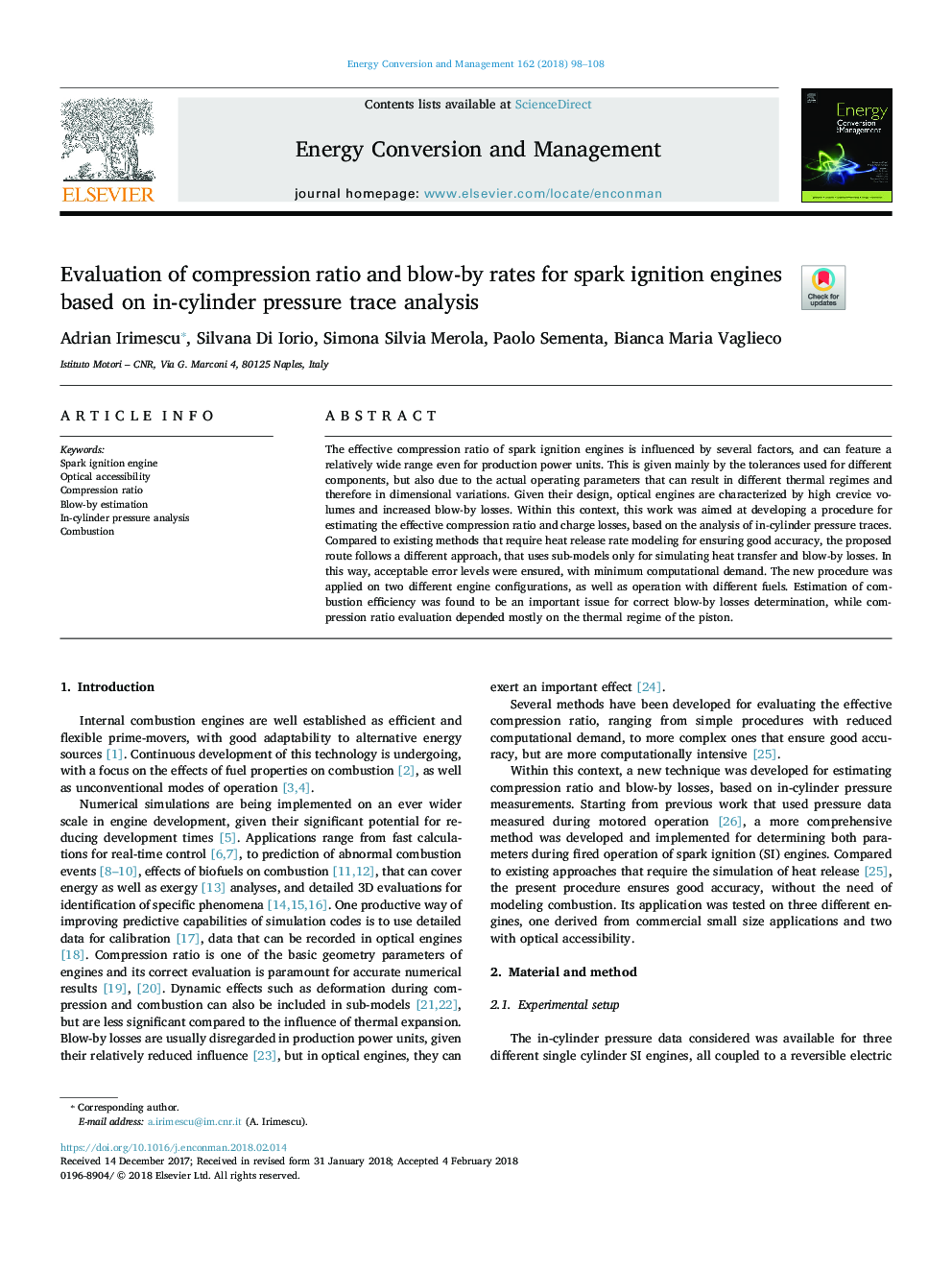| Article ID | Journal | Published Year | Pages | File Type |
|---|---|---|---|---|
| 7158893 | Energy Conversion and Management | 2018 | 11 Pages |
Abstract
The effective compression ratio of spark ignition engines is influenced by several factors, and can feature a relatively wide range even for production power units. This is given mainly by the tolerances used for different components, but also due to the actual operating parameters that can result in different thermal regimes and therefore in dimensional variations. Given their design, optical engines are characterized by high crevice volumes and increased blow-by losses. Within this context, this work was aimed at developing a procedure for estimating the effective compression ratio and charge losses, based on the analysis of in-cylinder pressure traces. Compared to existing methods that require heat release rate modeling for ensuring good accuracy, the proposed route follows a different approach, that uses sub-models only for simulating heat transfer and blow-by losses. In this way, acceptable error levels were ensured, with minimum computational demand. The new procedure was applied on two different engine configurations, as well as operation with different fuels. Estimation of combustion efficiency was found to be an important issue for correct blow-by losses determination, while compression ratio evaluation depended mostly on the thermal regime of the piston.
Related Topics
Physical Sciences and Engineering
Energy
Energy (General)
Authors
Adrian Irimescu, Silvana Di Iorio, Simona Silvia Merola, Paolo Sementa, Bianca Maria Vaglieco,
